- Accueil
- Pages cachées
- 18 AVRIL 2024 NEWS
18 AVRIL 2024 NEWS
INSTITUT SUPERIEUR D'ANTHROPOLOGIE
INSTITUT OF ANTHROPOLOGY
COURS ONLINE – COURS A DISTANCE
INSCRIPTIONS OUVERTES
REGISTER NOW
PORTUGAL - 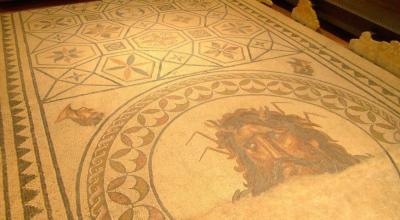 Ossónoba - The Ossónoba’s first archaeological evidence dates back to the 4th century B.C., when the Phoenicians settled in the Western Mediterranean. The city was then called Ossónoba From the 2nd century B.C. until the 8th A.D. the city was under Roman and Visigoth dominance being afterwards conquered by the Muslims in 713. A team of archaeologists from ERA Arqueologia discovered ancient Roman structures and the remains of a man, woman, and child while conducting excavations over a 5,000 square meter area that will eventually house a real estate development. The excavations, which took place before a construction project, revealed the grave of a man whose skeleton was complete and who would have been between 39 and 45 years old, as well as a young woman under the age of 25, and a baby who would have been no more than six months old, according to archaeologist Francisco Correa. Francisco Correia, the project’s head archaeologist, said in a statement that the discoveries were made in an old truck repair workshop and are believed to date from the 5th or 6th century. The tombs appear to have been looted in the past to steal “small bracelets, necklaces, and rings,” according to anthropologist Cláudia Maio. The tombs indicate that the people may have had “some economic status” as they were not simply placed in open graves but instead buried in carefully built graves. The proximity of the three people’s graves seems to indicate that they were family members, though the team cannot be certain of that. “But we cannot say anything for sure,” the anthropologist said. To learn more, the researchers hope to be able to provide more precise answers through DNA tests and isotopic analysis techniques used to determine population movements and dietary habits from chemical traces in ancient human remains. This latest archaeological discovery did not come as a surprise to archaeologists, who had already led similar works which resulted in the discovery of a Roman game artifact believed to date back to the first century AD in 2020. The researchers also recovered Roman artifacts in the area, including ceramics, bone dice, nails, pins, a spoon, possible evidence of a dye factory, and coins minted during the reign of Constantine the Great, between A.D. 306 and 337.
Ossónoba - The Ossónoba’s first archaeological evidence dates back to the 4th century B.C., when the Phoenicians settled in the Western Mediterranean. The city was then called Ossónoba From the 2nd century B.C. until the 8th A.D. the city was under Roman and Visigoth dominance being afterwards conquered by the Muslims in 713. A team of archaeologists from ERA Arqueologia discovered ancient Roman structures and the remains of a man, woman, and child while conducting excavations over a 5,000 square meter area that will eventually house a real estate development. The excavations, which took place before a construction project, revealed the grave of a man whose skeleton was complete and who would have been between 39 and 45 years old, as well as a young woman under the age of 25, and a baby who would have been no more than six months old, according to archaeologist Francisco Correa. Francisco Correia, the project’s head archaeologist, said in a statement that the discoveries were made in an old truck repair workshop and are believed to date from the 5th or 6th century. The tombs appear to have been looted in the past to steal “small bracelets, necklaces, and rings,” according to anthropologist Cláudia Maio. The tombs indicate that the people may have had “some economic status” as they were not simply placed in open graves but instead buried in carefully built graves. The proximity of the three people’s graves seems to indicate that they were family members, though the team cannot be certain of that. “But we cannot say anything for sure,” the anthropologist said. To learn more, the researchers hope to be able to provide more precise answers through DNA tests and isotopic analysis techniques used to determine population movements and dietary habits from chemical traces in ancient human remains. This latest archaeological discovery did not come as a surprise to archaeologists, who had already led similar works which resulted in the discovery of a Roman game artifact believed to date back to the first century AD in 2020. The researchers also recovered Roman artifacts in the area, including ceramics, bone dice, nails, pins, a spoon, possible evidence of a dye factory, and coins minted during the reign of Constantine the Great, between A.D. 306 and 337.
Three Roman Graves Uncovered in Portugal - Arkeonews
TONGA – 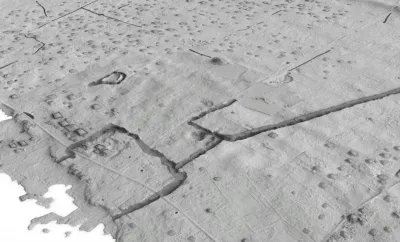 Tongatapu - Lasers have been used to uncover a long-lost city's remains on the Tongatapu, the main island of Tonga. Placed along the idyllic Pacific shores and palm trees, the ancient ruins show that urban environments emerged in the region way earlier than thought – and long before Europeans arrived. Archeologists at the Australian National University used aerial LiDAR scanning to map the landscape of Tongatapu, which hosts Tonga's capital city, Nukuʻalofa. This revealed imprints of settlements that shared the traits of other urban settlement systems found elsewhere in the world, including extensive roads, fortifications, communal structures, and thousands of earth mounds. They also found evidence of large soil mounds called sia heu lupe that were constructed for the sport of pigeon snaring. “Earth structures were being constructed in Tongatapu around AD 300. This is 700 years earlier than previously thought,” lead study author Phillip Parton, PhD scholar of archaeology at the Australian National University in Canberra, said in a statement. “As settlements grew, they had to come up with new ways of supporting that growing population. This kind of set-up – what we call low density urbanization – sets in motion huge social and economic change. People are interacting more and doing different kinds of work,” he said This city emerged long before the arrival of Europeans in Tongatapu in 1773 CE, dispelling the outdated belief that the South Pacific was devoid of complex human societies before colonization. Researchers have previously argued that Pacific islands didn’t develop urban settlements because their population density was too low. The discoveries in Tongatapu challenge this view by providing evidence of low-density urbanization; a unique form of city that took a different path from the European model of urban settlements. “Urbanization is not an area that had been investigated much until now. When people think of early cities they usually think of traditional old European cities with compact housing and windy cobblestone streets. This is a very different kind of city,” Parton added. “Having this type of information really adds to our understanding of early Pacific societies,” he continued. Part of this discovery in Tonga is thanks to new technologies like LiDAR. First developed in the early 1970s for space exploration, this laser-based imaging technology allows archaeologists to survey portions of land and reveal evidence of human structures that have since been lost to nature. In recent years, this cutting-edge method has been used to show the Amazon rainforest in South America was once a bustling hive of vast cities. Much like the cities of pre-Columbian America, the researchers believe the centuries-old cities of Tonga were likely brought to ruin in the age of colonization. “It didn’t collapse because the system was flawed; it was more to do with the arrival of Europeans and introduced diseases,” Parton explained. “This is just the beginning in terms of early Pacific settlements. There’s likely still much to be discovered.” The study is published in the Journal of Archaeological Method and Theory.
Tongatapu - Lasers have been used to uncover a long-lost city's remains on the Tongatapu, the main island of Tonga. Placed along the idyllic Pacific shores and palm trees, the ancient ruins show that urban environments emerged in the region way earlier than thought – and long before Europeans arrived. Archeologists at the Australian National University used aerial LiDAR scanning to map the landscape of Tongatapu, which hosts Tonga's capital city, Nukuʻalofa. This revealed imprints of settlements that shared the traits of other urban settlement systems found elsewhere in the world, including extensive roads, fortifications, communal structures, and thousands of earth mounds. They also found evidence of large soil mounds called sia heu lupe that were constructed for the sport of pigeon snaring. “Earth structures were being constructed in Tongatapu around AD 300. This is 700 years earlier than previously thought,” lead study author Phillip Parton, PhD scholar of archaeology at the Australian National University in Canberra, said in a statement. “As settlements grew, they had to come up with new ways of supporting that growing population. This kind of set-up – what we call low density urbanization – sets in motion huge social and economic change. People are interacting more and doing different kinds of work,” he said This city emerged long before the arrival of Europeans in Tongatapu in 1773 CE, dispelling the outdated belief that the South Pacific was devoid of complex human societies before colonization. Researchers have previously argued that Pacific islands didn’t develop urban settlements because their population density was too low. The discoveries in Tongatapu challenge this view by providing evidence of low-density urbanization; a unique form of city that took a different path from the European model of urban settlements. “Urbanization is not an area that had been investigated much until now. When people think of early cities they usually think of traditional old European cities with compact housing and windy cobblestone streets. This is a very different kind of city,” Parton added. “Having this type of information really adds to our understanding of early Pacific societies,” he continued. Part of this discovery in Tonga is thanks to new technologies like LiDAR. First developed in the early 1970s for space exploration, this laser-based imaging technology allows archaeologists to survey portions of land and reveal evidence of human structures that have since been lost to nature. In recent years, this cutting-edge method has been used to show the Amazon rainforest in South America was once a bustling hive of vast cities. Much like the cities of pre-Columbian America, the researchers believe the centuries-old cities of Tonga were likely brought to ruin in the age of colonization. “It didn’t collapse because the system was flawed; it was more to do with the arrival of Europeans and introduced diseases,” Parton explained. “This is just the beginning in terms of early Pacific settlements. There’s likely still much to be discovered.” The study is published in the Journal of Archaeological Method and Theory.
Long-Lost Remains Of Ancient City In South Pacific Rewrites History | IFLScience
CROATIE – 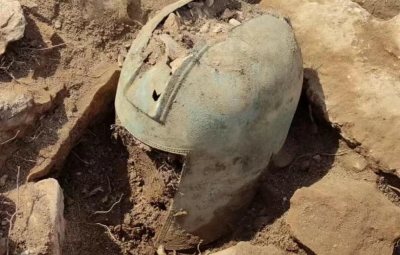 Zakotorac - Archaeologists found a 2500-year-old Greek-Ilyrian helmet during excavations in the Gomila area in the town of Zakotorac on Croatia’s Pelješac peninsula. The same team that found the Greek-Ilyrian helmet in 2020, in the same place, has found the next helmet, which according to the first analysis is older than the one found earlier. The previous example most likely belonged to a member of the warrior elite who was interred there because it was discovered in a grave with pieces of iron weapons. Archaeologists think the recently discovered helmet may have been a votive deposit because it was discovered in a dry stone-walled addition to a grave. Both of the helmets found are of different types and dates: The helmet discovered in 2020 was of a type commonly used in Greece and Illyria in the 4th century BC. It was an open-faced helmet with a rectangular cross-section for the face and decorative edges. The newly found helmet is thought to date from the 6th century BC and is extremely rare. Finding two different Greek-Illyrian helmets at one site is unprecedented. This find, along with a wealth of clothing, jewelry, and burial artifacts unearthed since the excavations began, greatly expands our knowledge of the funeral practices of Illyrian communities in the latter half of the first millennium BCE.
Zakotorac - Archaeologists found a 2500-year-old Greek-Ilyrian helmet during excavations in the Gomila area in the town of Zakotorac on Croatia’s Pelješac peninsula. The same team that found the Greek-Ilyrian helmet in 2020, in the same place, has found the next helmet, which according to the first analysis is older than the one found earlier. The previous example most likely belonged to a member of the warrior elite who was interred there because it was discovered in a grave with pieces of iron weapons. Archaeologists think the recently discovered helmet may have been a votive deposit because it was discovered in a dry stone-walled addition to a grave. Both of the helmets found are of different types and dates: The helmet discovered in 2020 was of a type commonly used in Greece and Illyria in the 4th century BC. It was an open-faced helmet with a rectangular cross-section for the face and decorative edges. The newly found helmet is thought to date from the 6th century BC and is extremely rare. Finding two different Greek-Illyrian helmets at one site is unprecedented. This find, along with a wealth of clothing, jewelry, and burial artifacts unearthed since the excavations began, greatly expands our knowledge of the funeral practices of Illyrian communities in the latter half of the first millennium BCE.
The sensational second discovery in Croatia: Greek-Illyrian Helmet 2500 years old - Arkeonews
GRECE – 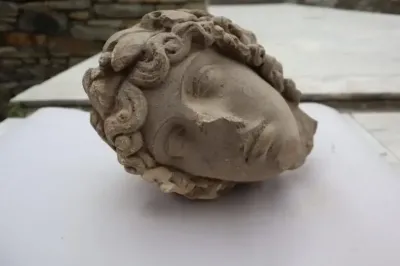 Phillipi - An archeological expedition conducted by the Aristotle University of Thessaloniki in the ancient settlement of Phillipi has uncovered the marble head of a statue believed to depict the god Apollo, according to a release from the Greek Ministry of Culture and Sports. The site has been the subject of archeological investigations since 1856, and there have been fruitful excavations in recent years. A fountain uncovered in the ancient town square revealed a largely complete monumental statue of the god Hercules, holding his famous club and lion skin; the same fountain has produced this new find of Apollo. The statue of Apollo is likely dated to the 2nd or 3rd century C.E., the same as the statue of Hercules, and displays the god with curly hair and a laurel crown – iconography that archeologists have used to identify him. While the divine statues are from the first few centuries of the Common Era, the fountain they seem to have adorned is much later, dating to the 8th or 9th centuries.
Phillipi - An archeological expedition conducted by the Aristotle University of Thessaloniki in the ancient settlement of Phillipi has uncovered the marble head of a statue believed to depict the god Apollo, according to a release from the Greek Ministry of Culture and Sports. The site has been the subject of archeological investigations since 1856, and there have been fruitful excavations in recent years. A fountain uncovered in the ancient town square revealed a largely complete monumental statue of the god Hercules, holding his famous club and lion skin; the same fountain has produced this new find of Apollo. The statue of Apollo is likely dated to the 2nd or 3rd century C.E., the same as the statue of Hercules, and displays the god with curly hair and a laurel crown – iconography that archeologists have used to identify him. While the divine statues are from the first few centuries of the Common Era, the fountain they seem to have adorned is much later, dating to the 8th or 9th centuries.
POLOGNE – 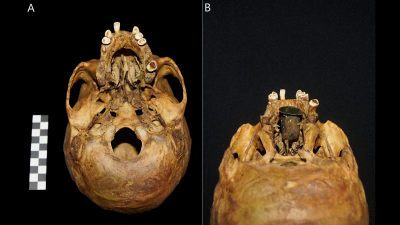 Cracovie - Something novel has been discovered by Polish archaeologists working on the excavation of the Church of St. Francis of Assisi in Krakow; it is thought to be the first discovery of its kind in the nation. A first-of-its-kind medical prosthesis: a nearly 300-year-old device that helped a man with cleft palate live more comfortably with this condition. The device, described as a palatal obturator, was designed to fit into the roof of the man’s mouth. It would fit into the nasal cavity of the man replacing his hard palate.nCleft palates arise when the hard palate, or roof of the mouth, doesn’t close during gestation. These days, cleft palates can be corrected surgically. However, this was not available to the man 300 years ago. Instead, he found another solution: this device, which was inserted into his mouth as a prosthetic. The authors note in their paper, that the first attempts to replace missing palate parts were likely made in antiquity. Demosthenes (384-322 BC), a Greek orator, had a congenital cleft palate and may have filled open gaps in his mouth with pebbles. The “exceptional” device consists of two parts. A metal plate that mimics the hard palate is attached to a wool pad, designed to secure the device comfortably when fitted into the mouth. The hard palate prevents substances in the mouth from entering the nasal cavity, and it also helps with swallowing, breathing and talking, according to the study. The 1.2-inch-long (3.1 centimeters) prosthesis, known as a palatal obturator, weighs around 0.2 ounce (5.5 grams), according to the study. The prosthetic is overall concave in shape and designed to arch up into the nasal cavity leaving a hollow in the mouth, just as a natural hard palate would. To better understand the prosthesis’s composition, the researchers examined it under a scanning electron microscope and used X-ray spectroscopy, which analyzes the chemical composition of a sample. They discovered that the metal pieces were primarily composed of copper, with significant amounts of gold and silver. The wool was also tested and discovered to contain traces of silver iodide. This was most likely added to the pad because of its antimicrobial properties. The study was published in the April issue of the Journal of Archaeological Science: Reports. https://doi.org/10.1016/j.jasrep.2024.104443
Cracovie - Something novel has been discovered by Polish archaeologists working on the excavation of the Church of St. Francis of Assisi in Krakow; it is thought to be the first discovery of its kind in the nation. A first-of-its-kind medical prosthesis: a nearly 300-year-old device that helped a man with cleft palate live more comfortably with this condition. The device, described as a palatal obturator, was designed to fit into the roof of the man’s mouth. It would fit into the nasal cavity of the man replacing his hard palate.nCleft palates arise when the hard palate, or roof of the mouth, doesn’t close during gestation. These days, cleft palates can be corrected surgically. However, this was not available to the man 300 years ago. Instead, he found another solution: this device, which was inserted into his mouth as a prosthetic. The authors note in their paper, that the first attempts to replace missing palate parts were likely made in antiquity. Demosthenes (384-322 BC), a Greek orator, had a congenital cleft palate and may have filled open gaps in his mouth with pebbles. The “exceptional” device consists of two parts. A metal plate that mimics the hard palate is attached to a wool pad, designed to secure the device comfortably when fitted into the mouth. The hard palate prevents substances in the mouth from entering the nasal cavity, and it also helps with swallowing, breathing and talking, according to the study. The 1.2-inch-long (3.1 centimeters) prosthesis, known as a palatal obturator, weighs around 0.2 ounce (5.5 grams), according to the study. The prosthetic is overall concave in shape and designed to arch up into the nasal cavity leaving a hollow in the mouth, just as a natural hard palate would. To better understand the prosthesis’s composition, the researchers examined it under a scanning electron microscope and used X-ray spectroscopy, which analyzes the chemical composition of a sample. They discovered that the metal pieces were primarily composed of copper, with significant amounts of gold and silver. The wool was also tested and discovered to contain traces of silver iodide. This was most likely added to the pad because of its antimicrobial properties. The study was published in the April issue of the Journal of Archaeological Science: Reports. https://doi.org/10.1016/j.jasrep.2024.104443
TURQUIE – 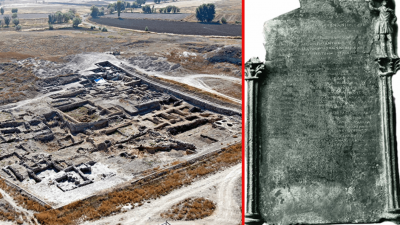 Kültepe-Karahöyük. - The Anisa bronze tablet proves that Greek was used in Anatolia 2000 years ago and that a multicultural life existed. Anisa was an ancient Cappadocian city located 19 km northeast of Caesarea on the site of Kültepe-Karahöyük. Assyrian texts from the 19th century BC mention the Hittite city of Kaniş (or Kaneş), from whence the word Anisa most likely originated. Kültepe (ash-hill) is an archaeological site in Kayseri Province, Türkiye, inhabited from the beginning of the 3rd millennium BC, in the Early Bronze Age. The nearest modern city to Kültepe is Kayseri, about 20km southwest. The discovery of roughly 10,000 clay cuneiform tablets at Kültepe—dubbed “Cappadocian tablets”—made the site famous. A city coin from the third century BC is the oldest piece of known evidence for the Greek name Anisa. While no ancient writer mentions Anisa, it is known from an inscription (ενΑνίσoις) carved on a bronze plate surrounded by relief decor that was discovered at Kültepe-Karahöyük. It is an honorary decree of the city of Anisa dated to the late 2nd or early 1st BC. Kültepe Excavation Head Prof Dr Fikri Kulakoğlu; said that this important artefact is now in the Berlin Museum. Professor Fikri Kulakoğlu added that a council decision was written on the tablet and it was decided to hang this text in a temple in the city.,, Prof. Dr. Kulakoğlu; “Kültepe is not a place known only for its tablets. During the excavations in Kültepe, a settlement sequence dating back to at least 6 thousand years ago was identified and excavations are continuing towards earlier periods.” “The most interesting part is that there are very interesting data belonging to what we call the ‘Hellenistic period’, that is, the period after the 300s. We know from the excavations and research that there is a dense Hellenistic Period settlement in Kültepe. Structures related to this were also identified. Various sculptor artifacts and beautiful ceramics belonging to that period were found in what should have been a sacred building.” The professor stated that the tablet was smuggled to Berlin by an antiquarian in the 1880s. This bronze tablet, which we call the Anisa Plate, is today in the Berlin Museum. It dates back to approximately 160-150 BC,” he said. Prof. Dr. Kulakoğlu gave information about the characteristics of the tablet; “A council decision was written on this tablet. It was decided to hang this text in a temple here. This decision was taken by a city council in Kayseri. According to this text, it is understood that there was a city in Kaniş, Kültepe, whose name at that time was Anisa. In this decree, there is a decision to honor a high-level administrator.” “In that sense, it is understood that Kültepe still had the status of a city, especially in later periods. Greek seems to have been the language of the city at that time. On the other hand, it is understood from the names mentioned in the tablet that there was also a Persian culture here.” “Especially when we look at the father names of the people living here, we can understand that a truly multicultural society lived in this period,” he said.
Kültepe-Karahöyük. - The Anisa bronze tablet proves that Greek was used in Anatolia 2000 years ago and that a multicultural life existed. Anisa was an ancient Cappadocian city located 19 km northeast of Caesarea on the site of Kültepe-Karahöyük. Assyrian texts from the 19th century BC mention the Hittite city of Kaniş (or Kaneş), from whence the word Anisa most likely originated. Kültepe (ash-hill) is an archaeological site in Kayseri Province, Türkiye, inhabited from the beginning of the 3rd millennium BC, in the Early Bronze Age. The nearest modern city to Kültepe is Kayseri, about 20km southwest. The discovery of roughly 10,000 clay cuneiform tablets at Kültepe—dubbed “Cappadocian tablets”—made the site famous. A city coin from the third century BC is the oldest piece of known evidence for the Greek name Anisa. While no ancient writer mentions Anisa, it is known from an inscription (ενΑνίσoις) carved on a bronze plate surrounded by relief decor that was discovered at Kültepe-Karahöyük. It is an honorary decree of the city of Anisa dated to the late 2nd or early 1st BC. Kültepe Excavation Head Prof Dr Fikri Kulakoğlu; said that this important artefact is now in the Berlin Museum. Professor Fikri Kulakoğlu added that a council decision was written on the tablet and it was decided to hang this text in a temple in the city.,, Prof. Dr. Kulakoğlu; “Kültepe is not a place known only for its tablets. During the excavations in Kültepe, a settlement sequence dating back to at least 6 thousand years ago was identified and excavations are continuing towards earlier periods.” “The most interesting part is that there are very interesting data belonging to what we call the ‘Hellenistic period’, that is, the period after the 300s. We know from the excavations and research that there is a dense Hellenistic Period settlement in Kültepe. Structures related to this were also identified. Various sculptor artifacts and beautiful ceramics belonging to that period were found in what should have been a sacred building.” The professor stated that the tablet was smuggled to Berlin by an antiquarian in the 1880s. This bronze tablet, which we call the Anisa Plate, is today in the Berlin Museum. It dates back to approximately 160-150 BC,” he said. Prof. Dr. Kulakoğlu gave information about the characteristics of the tablet; “A council decision was written on this tablet. It was decided to hang this text in a temple here. This decision was taken by a city council in Kayseri. According to this text, it is understood that there was a city in Kaniş, Kültepe, whose name at that time was Anisa. In this decree, there is a decision to honor a high-level administrator.” “In that sense, it is understood that Kültepe still had the status of a city, especially in later periods. Greek seems to have been the language of the city at that time. On the other hand, it is understood from the names mentioned in the tablet that there was also a Persian culture here.” “Especially when we look at the father names of the people living here, we can understand that a truly multicultural society lived in this period,” he said.
ANGLETERRE - 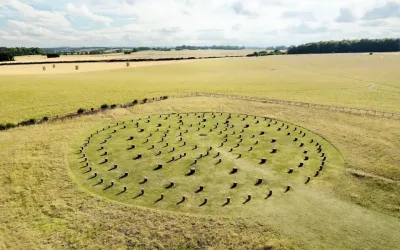 Woodhenge - New research has revealed that the ancient monuments Woodhenge and Stonehenge are contemporary with one another, not built hundreds of years apart as previously thought, and that Woodhenge was built in at least two phases. The Neolithic monument of Woodhenge had long been thought to have been constructed in a single phase around 2300 BC on Salisbury Plain in Wiltshire, a couple of hundred years after the sarsen stones were erected at nearby Stonehenge. Now, radiocarbon dating of Woodhenge’s concentric ovals of standing posts, surrounded by a bank and ditch, has found that the solstice-aligned timber rings are earlier than assumed and the monument was constructed over a longer period than previously realised. It now seems the timber rings were erected in the decades around 2600 BC and the surrounding earthworks were made about 150 to 200 years later, circa 2450 BC. The timber rings are therefore broadly contemporary to Stonehenge, which was erected in the decades around 2500 BC, or slightly earlier. The research was co-headed by Amanda Chadburn, English Heritage’s former lead adviser at the Stonehenge and Avebury World Heritage Site.She told The Telegraph: “We’ve dated different parts of Woodhenge and some bits are clearly later than others, showing that the monument wasn’t all built at the same time. “We’ve discovered that it was a two-phase monument and that its solstice-aligned timber rings were earlier, constructed around 2600BC – and is therefore broadly contemporary with the sarsens at Stonehenge. “So it’s pushed Woodhenge back to a similar period. This shows that actually it’s a much more complicated picture.” Noting that both monuments were aligned with the solstices, she said of the Woodhenge discovery: “It’s significant because it proves that Stonehenge was not a one-off within the landscape. n“It shows that people who held their ceremonies or religious rituals in these monuments were looking at the sun in a similar way [at the same time].”
Woodhenge - New research has revealed that the ancient monuments Woodhenge and Stonehenge are contemporary with one another, not built hundreds of years apart as previously thought, and that Woodhenge was built in at least two phases. The Neolithic monument of Woodhenge had long been thought to have been constructed in a single phase around 2300 BC on Salisbury Plain in Wiltshire, a couple of hundred years after the sarsen stones were erected at nearby Stonehenge. Now, radiocarbon dating of Woodhenge’s concentric ovals of standing posts, surrounded by a bank and ditch, has found that the solstice-aligned timber rings are earlier than assumed and the monument was constructed over a longer period than previously realised. It now seems the timber rings were erected in the decades around 2600 BC and the surrounding earthworks were made about 150 to 200 years later, circa 2450 BC. The timber rings are therefore broadly contemporary to Stonehenge, which was erected in the decades around 2500 BC, or slightly earlier. The research was co-headed by Amanda Chadburn, English Heritage’s former lead adviser at the Stonehenge and Avebury World Heritage Site.She told The Telegraph: “We’ve dated different parts of Woodhenge and some bits are clearly later than others, showing that the monument wasn’t all built at the same time. “We’ve discovered that it was a two-phase monument and that its solstice-aligned timber rings were earlier, constructed around 2600BC – and is therefore broadly contemporary with the sarsens at Stonehenge. “So it’s pushed Woodhenge back to a similar period. This shows that actually it’s a much more complicated picture.” Noting that both monuments were aligned with the solstices, she said of the Woodhenge discovery: “It’s significant because it proves that Stonehenge was not a one-off within the landscape. n“It shows that people who held their ceremonies or religious rituals in these monuments were looking at the sun in a similar way [at the same time].”
New research proves Woodhenge is just as old as Stonehenge (telegraph.co.uk)
CHINE – 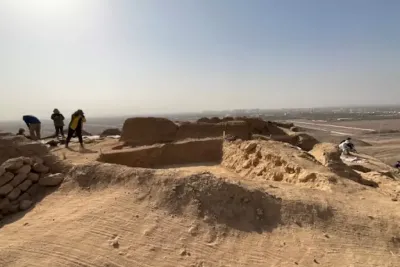 Turpan - After two years of excavation, a batch of important cultural relics – including a well-preserved jade cross – was unearthed at the relics site of a Nestorian monastery in Turpan, northwest China's Xinjiang Uygur Autonomous Region. This was reported by The Xinhua News Agency. Nestorianism, or Jingjiao in Chinese, was the earliest form of Christianity introduced to China. Covering an area of about 2,500 square meters, the monastery is a relatively well-preserved structure that comprises the ritual halls and auxiliary buildings such as kitchens, wine cellars, libraries, and storage rooms. "Jade represents traditional Chinese culture. The discovery of a jade cross fully demonstrates that Nestorianism integrated with local culture after its introduction to this region and showed signs of Sinicization", – said Liu Wensuo, a professor of the Sun Yat-sen University, who is in charge of the excavation project. Liu said that the monastery, which dates back to the Tang and Song dynasties, is a rare Nestorian site in China as well as the world, with significant scientific and cultural value. At present, archaeologists have unearthed 871 documents from the site.
Turpan - After two years of excavation, a batch of important cultural relics – including a well-preserved jade cross – was unearthed at the relics site of a Nestorian monastery in Turpan, northwest China's Xinjiang Uygur Autonomous Region. This was reported by The Xinhua News Agency. Nestorianism, or Jingjiao in Chinese, was the earliest form of Christianity introduced to China. Covering an area of about 2,500 square meters, the monastery is a relatively well-preserved structure that comprises the ritual halls and auxiliary buildings such as kitchens, wine cellars, libraries, and storage rooms. "Jade represents traditional Chinese culture. The discovery of a jade cross fully demonstrates that Nestorianism integrated with local culture after its introduction to this region and showed signs of Sinicization", – said Liu Wensuo, a professor of the Sun Yat-sen University, who is in charge of the excavation project. Liu said that the monastery, which dates back to the Tang and Song dynasties, is a rare Nestorian site in China as well as the world, with significant scientific and cultural value. At present, archaeologists have unearthed 871 documents from the site.
Jade cross discovered in Nestorian relics site in China's Xinjiang | Ukrainian news (ukranews.com)